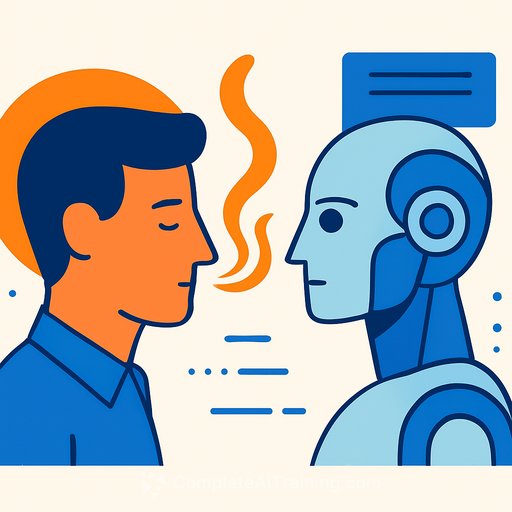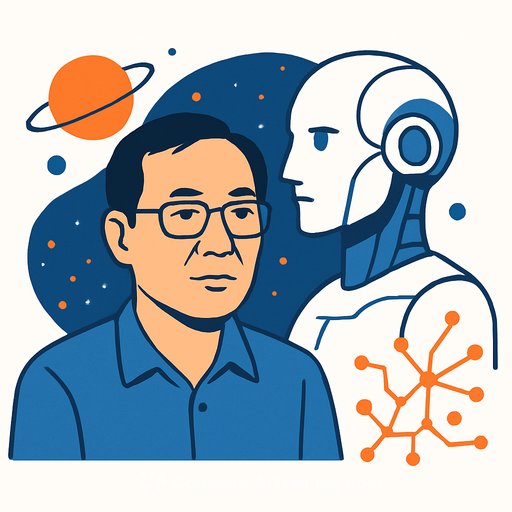Reporting & Editing: What New Journalism Can Teach Us in the AI Era
Long-form writing is colliding with AI. That's not a threat if you keep your edge where machines can't go: the senses. Gay Talese's "Frank Sinatra Has a Cold" remains a field guide for that edge - observation so physical it feels lived, not generated.
This isn't nostalgia. It's a practical reset. If AI gives you speed and structure, your job is to supply the one thing it can't simulate from the inside: presence.
Why this matters now
Algorithms can outline, summarize, and mimic style. They don't stand in the smoke, feel the cold tape of silence, or catch a subject's small tell before a blowup. That gap is your advantage - if you train it.
Writers in Norway's Fortellingens Kraft community prove this every year: stories built from quiet glances, textured rooms, and dialogue that hits like clean edits. The lessons trace back to Talese's sensory-first reporting.
The "Super Human" stack
Vision: Use sight as inference. Talese scans posture, clothes, and light to reveal mood and status. When a room turns and sees Sinatra's double, the misread becomes a beat of vulnerability. Details aren't decoration - they're diagnostics.
Smell: Atmosphere is more than what you see. Cigarette haze, bourbon, and late-night air become a signal for desire and fatigue. A quick sniff at a cup of coffee can expose control, preference, even pettiness.
Hearing: Sound is pacing. The "clamorous clang" of a room gives way to a ballad, and the whole scene tightens. Billiard clacks, shoe taps, a clipped line of dialogue - that's rhythm without narration.
Touch and taste: Texture grounds myth. Sinatra's fingers, "nubby and raw," turn an icon mortal. A ketchup-splattered flare-up tells you more than a paragraph of analysis.
Field methods: a quick checklist
- Before reporting: List 5 senses you must confirm on scene. Draft 3 hypotheses you will try to disprove.
- On scene: Log light sources, air quality, temperature, floor texture, crowd movement. Capture one scent and one sound that define the room.
- Micro-observations: Hands, shoes, edges of objects, what's worn-down or repaired, how people hold pauses.
- After: Write a 120-word scene from senses only. No adjectives you didn't earn. Swap one verb for a sound every paragraph.
Writing moves bots can't fake
- Stake the opening with sensory fact: Name the object in hand, the posture, the light. Keep the "I" off the page unless it changes the story.
- Use dialogue as camera: One sharp line beats five soft ones. Let silence do work.
- Build rhythm: Alternate long observation with short impact lines. Place a sensory callback before the turn.
- End on cause, not summary: Show the thing that explains everything - a gesture, a taste, a reveal.
How to use AI without losing your edge
- Let AI handle the scaffolding: timelines, source lists, topic background, rough outlines.
- Keep the living parts for yourself: scenes, transitions, dialogue, and the sensory pass.
- Prompts to keep it clean: "Suggest three structural options for this outline," "List counter-arguments," "Surface gaps in sourcing." Never ask it to write your scene.
- Guardrails: Verify every claim. Keep a sensory log separate from transcripts. If a sentence reads like a blend, replace it with a moment only you witnessed.
Mini-scene template (use this on your next assignment)
- Line 1: Placement (where you are, time, light source).
- Line 2: Subject in action (hands, posture, object).
- Line 3: Sound beat (music, machine, silence).
- Line 4: Scent or air (smoke, sweat, coffee, rain).
- Line 5: Friction (conflict, hesitation, mismatch).
- Line 6: Meaning (what this scene proves about the subject today).
A quick study list
Revisit the piece that sparked this conversation and study how every sense carries weight: Frank Sinatra Has a Cold. Notice how the opening line establishes object, posture, and mood in seconds.
For writers using AI as a tool
If you want a curated look at practical tools for drafting, editing, and idea capture (without outsourcing your voice), scan this resource: AI tools for copywriting. Use tools for speed; keep the senses for soul.
The takeaway
AI can help you plan. It can't smell the room, feel the tension in a pause, or notice the boots everyone else missed. Be "super human" about the parts only you can do - vision, smell, sound, touch, taste - and your stories will read like lived experience, not assembly.
Your membership also unlocks:






